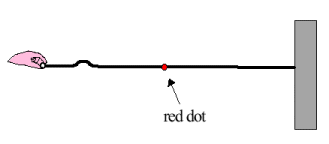Properties of sound
A sound wave is a mechanical wave (or mechanical vibration) that transit through media such as gas (air), liquid (water), and solid (wood).
Quality Of Sound
A sound or a sound wave is defined as the energy produced due to the vibrations of particles in a medium. When any medium produces a disturbance or vibrations, it causes a movement in the air particles which produces sound waves. Molecules in the air vibrate about a certain average position and create compressions and rarefactions. This is called pitch which is defined as the frequency of sound. The frequency is defined as the number of oscillations in pressure per second.
Categories of Sound Wave
People perceive sound in different ways, like a medico student takes sound as vibration produced by objects reaching the human eardrum. A physicist perceives sound as vibration produced by an object, which produces disturbances in nearby air molecules that travel further. Both of them describe it as vibration generated by an object, the difference is one talks about how it is received and other deals with how it travels and propagates across various mediums.
A long, taut string is attached to a distant wall (see figure). A demonstrator moves their hand and creates a very small amplitude pulse that reaches the wall in a certain amount of time t0. A small red dot is painted on the string halfway between the demonstrator's hand and the wall.
For each part below, select which of the listed actions taken by itself will produce the desired result. More than one answer may be correct, so select all the correct statements. (Tip: it might be possible to test some of these actions using this simulation https://phet.colorado.edu/sims/html/wave-on-a-string/latest/wave-on-a-string_en.html.)
How, if at all, can the demonstrator repeat the original experiment to produce:
a. A pulse that takes a longer time to reach the wall?
b. A pulse that is wider than the original pulse?
c. A pulse that makes the red dot travel a further distance than in the original experiment?

Trending now
This is a popular solution!
Step by step
Solved in 8 steps with 8 images








